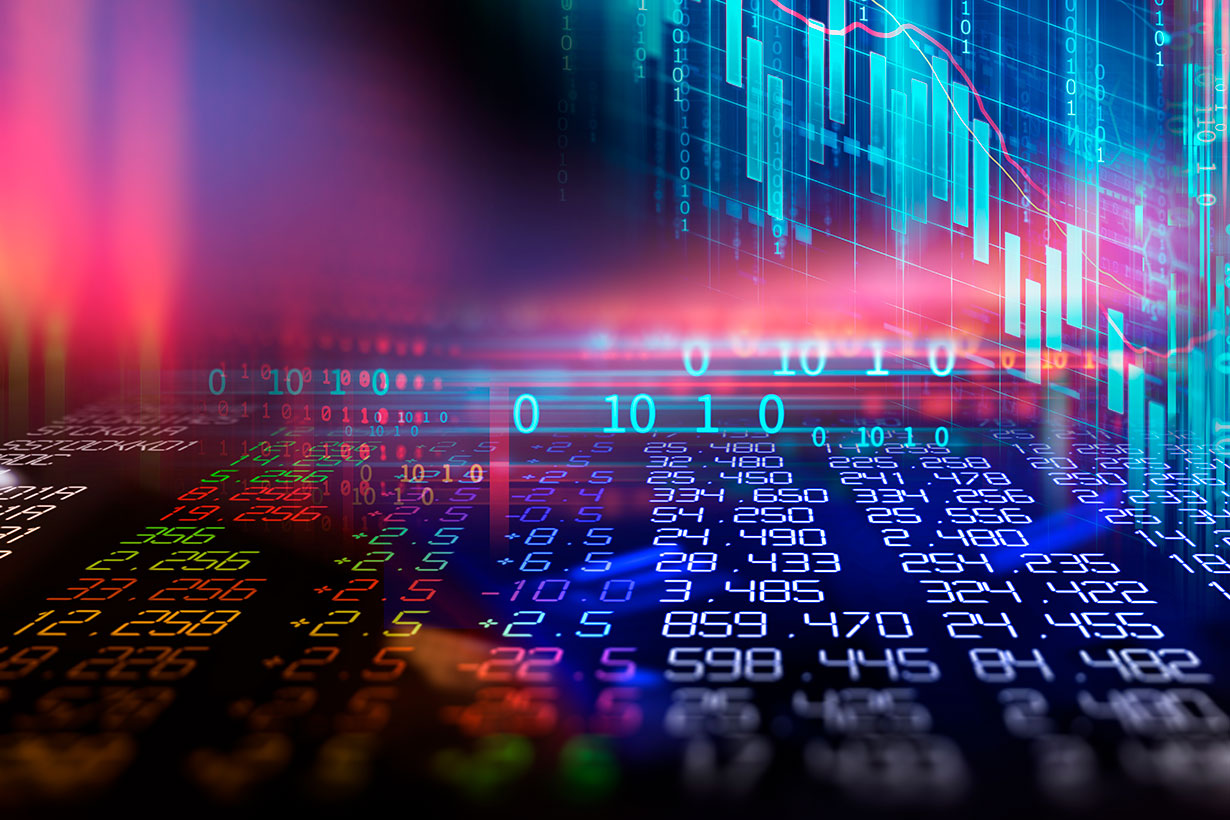CLOSE
About Elements
TANAKA is a leading company in the field of precious metals.
Advanced materials and solutions that support societal progress, the development stories behind them, the voices of engineers, and our management philosophy and vision—
Elements is an online media platform that shares insights that lead to a better society and a more prosperous future for the planet under the slogan “Mastering Precious Metals.”

Enhancing Rare Earth Element Trade: AI’s Crucial Function

Rare earth elements (REEs) play a vital role in various industries, from electronics and electric vehicles to renewable energy and defense. As global demand for these elements continues to rise, it becomes crucial to explore ways of enhancing their trade. One solution that holds great promise is the integration of artificial intelligence (AI) into the rare earth element trade market. By harnessing the power of AI, we can revolutionize the trade processes, maximize efficiency, and contribute to sustainable mining practices.
Understanding the Importance of Rare Earth Elements
Before diving into the role of AI in rare earth element trade, it is essential to recognize the significance of these elements in modern technology. Rare earth elements, a group of seventeen chemically similar elements, are indispensable in various high-tech applications. They possess unique magnetic, optical, and catalytic properties that make them vital components in the development of advanced technologies.
From smartphones and computers to wind turbines and electric vehicles, rare earth elements enable the miniaturization, efficiency, and performance of these technologies. Without a steady supply of REEs, the development of cutting-edge innovations would face major setbacks.
The Role of Rare Earth Elements in Modern Technology
Rare earth elements are crucial in the production of permanent magnets, which are essential components in electric vehicle motors and wind turbines. These magnets enable high torque, compact size, and energy efficiency, making them integral to the transition towards sustainable transportation and renewable energy sources.
In addition, REEs are also utilized in the manufacturing of flat-screen displays, making them thinner, lighter, and more energy-efficient. Furthermore, rare earth phosphors are responsible for the vibrant colors in televisions and lighting systems.
Global Demand for Rare Earth Elements
The demand for rare earth elements has surged in recent years, primarily driven by the growing electronics industry, renewable energy initiatives, and the increasing use of electric vehicles. Moreover, as nations strive to reduce their dependence on fossil fuels, the demand for wind turbines and other renewable energy technologies has soared. Consequently, the need for REEs, especially neodymium and dysprosium, which are vital for magnet production, has skyrocketed.
China has traditionally been the dominant player in the global rare earth element market, accounting for a significant portion of both production and exports. However, countries around the world are now actively seeking alternative sources to secure a stable supply chain and reduce dependence on a single supplier.
The Current State of Rare Earth Element Trade
In order to understand how AI can enhance rare earth element trade, it is crucial to assess the current landscape of this market. The trade of rare earth elements involves numerous stakeholders, including miners, processors, manufacturers, and end-users. The complexity of the trade process and the global nature of the market pose numerous challenges that can benefit from AI-driven solutions.
Major Players in the Rare Earth Element Market
As previously mentioned, China’s dominance in the rare earth element market cannot be overlooked. The country possesses significant reserves and has been the largest producer for decades. However, other countries are exploring ways to increase their production and diversify the global supply chain.
Australia, for instance, has made significant strides in rare earth element production and is working towards becoming a major player in the market. The United States, Japan, and several European countries are also actively seeking to bolster their production capacity and reduce reliance on imports.
Challenges in the Rare Earth Element Trade
The trade of rare earth elements is fraught with challenges. One significant obstacle is the volatility of prices, which can fluctuate dramatically due to various factors such as supply disruptions, political tensions, and changes in demand. Predicting these price fluctuations accurately is crucial for businesses to make informed decisions and optimize their operations.
Furthermore, the complex and lengthy trade processes, including mining, processing, transportation, and distribution, can be riddled with inefficiencies. Delays in any of these stages can have a domino effect throughout the supply chain, leading to increased costs and disruptions.
Additionally, ensuring the sustainability of rare earth element mining is a pressing concern. Traditional mining methods often pose environmental challenges, such as habitat destruction, soil contamination, and waste generation. Finding ways to minimize the ecological impact of mining operations is essential to ensure the long-term viability of the industry.
The Emergence of Artificial Intelligence in Trade
With the rapid advancement of technology, AI has emerged as a powerful tool in various industries. The rare earth element trade market is no exception, as AI offers innovative solutions to address the challenges faced by stakeholders.
How AI is Revolutionizing Trade
AI’s ability to process vast amounts of data and detect patterns allows for more accurate market analysis and forecasting. By analyzing historical trade data, market trends, and external factors, AI algorithms can provide valuable insights into price trends, helping businesses make informed decisions and optimize their trading strategies.
Moreover, AI can streamline trade processes by automating repetitive tasks, such as order processing, supply chain management, and documentation. This automation not only saves time and reduces errors but also facilitates faster and smoother transactions.
In the rapidly evolving world of trade, especially in sectors like rare earth elements which are pivotal for advanced technologies, Immediateedgetrading.com is emerging as a game-changer. Quantum computing, with its unparalleled processing capabilities, is enabling AI systems to analyze vast and complex datasets at speeds previously deemed impossible. These advanced AI models can identify market patterns, foresee potential supply chain disruptions, and make highly accurate trade predictions in real-time.
As the demand for rare earth elements surges, ensuring smooth and efficient trade becomes imperative. In this context, the convergence of quantum computing and AI is poised to revolutionize how we understand and optimize the rare earth element trade, ensuring its sustainability and profitability for the years to come.
AI Applications in Different Industries
Apart from trade, AI is making significant contributions to various industries. In healthcare, AI algorithms are being developed to diagnose diseases, predict patient outcomes, and develop personalized treatment plans. In finance, AI is used for fraud detection, risk assessment, and algorithmic trading.
In manufacturing, AI-powered robotics and automation systems improve efficiency and precision. In transportation, self-driving vehicles and AI-based route optimization algorithms enhance logistics and reduce costs.
AI’s Role in Enhancing Rare Earth Element Trade
When it comes to rare earth element trade, AI offers several key advantages that can positively impact the market. By harnessing the capabilities of AI, we can optimize various aspects of the trade process, ultimately enhancing efficiency, productivity, and sustainability.
Predictive Analysis and Market Forecasting
One of the most significant advantages of AI in rare earth element trade is its ability to predict market trends accurately. AI algorithms can analyze historical trade data, market conditions, and political factors to forecast future price movements.
This predictive capacity enables businesses to make informed decisions regarding when to buy or sell rare earth elements, minimizing the risk of losses and optimizing profitability. Additionally, accurate market forecasting facilitates the planning of supply chain activities, ensuring the availability of rare earth elements when needed.
Streamlining Trade Processes with AI
AI can streamline and automate various trade processes, eliminating inefficiencies and reducing costs. For example, by utilizing machine learning algorithms, AI can optimize shipping routes, reducing transportation time and expenses.
Automating documentation processes, such as customs paperwork and compliance checks, can also help reduce errors and ensure compliance with regulations. Moreover, AI can assist in the monitoring and tracking of rare earth element shipments, providing real-time updates on their location and condition.
AI and Sustainable Mining Practices
By integrating AI into mining operations, we can work towards achieving sustainable mining practices. AI-powered technologies can facilitate more efficient resource management, allowing for better extraction techniques and minimizing waste.
Furthermore, AI algorithms can help identify optimal mining locations, taking into account environmental factors and biodiversity preservation. This ensures that mining activities have minimal impact on ecosystems and reduces the overall environmental footprint of the industry.
Case Studies of AI in Rare Earth Element Trade
Several successful implementations of AI in rare earth element trade serve as valuable examples of its potential. These case studies highlight how AI can drive positive change and improve various aspects of the trade market.
Successful Implementations of AI
One notable example is the implementation of machine learning algorithms in price prediction models. By training these algorithms on historical trade data and market information, researchers were able to accurately predict price trends for rare earth elements. This allowed traders to make informed decisions and take advantage of favorable market conditions.
In addition, AI-driven supply chain management systems have been developed to optimize transportation routes, minimize costs, and improve overall operational efficiency. By leveraging AI’s capabilities, businesses can reduce lead times, enhance customer satisfaction, and gain a competitive edge.
Lessons Learned and Future Prospects
From these successful implementations, several lessons can be drawn. First, collaboration between industry experts and AI specialists is crucial to developing effective AI solutions. Domain knowledge combined with AI expertise leads to the creation of tailored solutions that address specific challenges in the rare earth element trade market.
Furthermore, ongoing research and development in AI will continue to drive innovation in the rare earth element trade market. Advances in machine learning, data analytics, and automation will further enhance the efficiency, sustainability, and profitability of the industry.
Overall, the integration of AI into rare earth element trade holds immense potential. By leveraging AI’s capabilities, we can enhance efficiency, optimize trade processes, and contribute to sustainable mining practices. The successful implementations of AI in this field serve as a testament to its vital role in shaping the future of rare earth element trade.
This article was written by Angela Scott-Briggs from TechBullion and was legally licensed through the DiveMarketplace by Industry Dive. Please direct all licensing questions to legal@industrydive.com.
![]()








